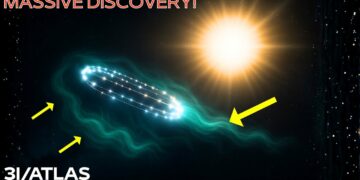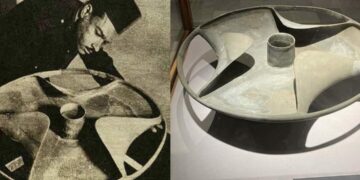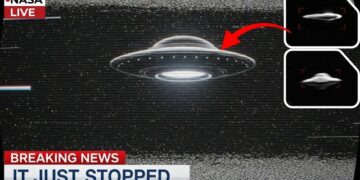For centuries, the Red Sea crossing has stood as a powerful story at the intersection of faith and legend—a daring escape that defies logic and captivates the imagination. This biblical account, far from just an ancient tale, has sparked debate and eluded definitive proof until recent discoveries. In a remote region where desert meets sea, new evidence has emerged, blurring the line between miracle and mystery. What has been found, and how does it connect to a long-hidden location beneath the waves? These findings are stirring excitement in both biblical and archaeological communities, offering clues that could reshape our understanding of this iconic event. Are you ready to explore this mystery?
The Land of Goshen
The land of Goshen, located in the fertile Nile Delta of ancient Egypt, was a thriving sanctuary for the Israelites during their early years in Egypt. Granted to them during Joseph’s time as a high-ranking official under a Pharaoh, Goshen provided a lush environment with abundant water and vegetation, ideal for agriculture and livestock. The Israelites prospered here, growing in number and strength, as described in Genesis. However, their prosperity drew suspicion from a new Pharaoh “who did not know Joseph” (Exodus 1:8), who saw their growing population as a threat. This led to oppressive measures, including forced labor to build cities like Pithom and Raamses and a brutal decree to drown newborn Hebrew males in the Nile. Despite the abundance of Goshen, it became a place of bondage and suffering, fueling the Israelites’ yearning for freedom. Recent archaeological studies, cited by Patterns of Evidence and GB News, suggest Semitic settlements in the eastern Nile Delta, supported by Egyptian records of foreign labor and famines, lending credence to the biblical narrative. Goshen was the crucible of suffering that set the stage for one of history’s most famous escapes.
The Exodus Begins
The Exodus commenced with a mass departure from the Egyptian city of Rameses after the devastating tenth plague—the death of Egypt’s firstborn (Exodus 12:37). Approximately 600,000 Israelite men, plus women and children—potentially over two million people—left on foot for Succoth, marking their journey to freedom. The urgency of their exit, prompted by Pharaoh’s reluctant release, led to the Passover ritual with unleavened bread, still observed today. Guided by a pillar of cloud by day and fire by night (Exodus 13:21-22), the Israelites were divinely led through the wilderness, avoiding major military routes like the “Way of the Philistines” to prevent early conflicts. Succoth, their first stop, allowed them to organize as a community, transitioning from slaves to a divinely chosen nation. Archaeological efforts, including satellite mapping cited by Patterns of Evidence, suggest Succoth’s location in the eastern Nile Delta aligns with biblical geography and ancient Egyptian settlement records, supporting the feasibility of this route.
The Pillar of Cloud and Fire
As the Israelites ventured into the wilderness, they were guided by a miraculous pillar of cloud by day and fire by night (Exodus 13:21-22). These divine signs provided direction, shade from the desert sun, and light in the cold nights, symbolizing God’s constant presence. Beyond practical guidance, the pillars offered reassurance and protection, notably when the cloud repositioned to block Pharaoh’s pursuing army (Exodus 14:19-20), ensuring the Israelites’ escape. Theologically, these pillars represent God’s omnipresence and intervention, a focal point of hope during uncertainty. While some scholars explore naturalistic explanations like atmospheric or volcanic phenomena, Patterns of Evidence emphasizes their theological significance as a divine act. The pillars remain a powerful symbol of God’s guidance in the Exodus narrative.
The Route to the Sea
From Succoth, the Israelites, guided by the pillar of cloud and fire, reached Etham before turning south toward the Gulf of Aqaba in the Sinai Peninsula. This rugged terrain, with steep cliffs and narrow wadis, led to Nuweiba, a wide beach hemmed in by mountains and the sea, as described in Exodus 14:2. This location, near Pi-Hahiroth facing Baal-Zephon, matches the biblical account of the Israelites being trapped with Pharaoh’s army approaching. Recent studies, including bathymetric maps cited by Patterns of Evidence, reveal an underwater land bridge at Nuweiba with a gradual slope, potentially enabling a miraculous crossing on dry ground. Ancient Egyptian records of military outposts like Migdol near Nuweiba, combined with archaeological finds, support this as a plausible crossing site, aligning geography with the biblical narrative.
The Nuweiba Crossing Site
Nuweiba, on the eastern Sinai Peninsula, is a leading candidate for the Red Sea crossing due to its unique geography—a large beach bordered by mountains and the sea, matching Exodus 14’s description of entrapment. Accessible only through the narrow Wadi Watir, Nuweiba could have funneled the Israelites to the shore. Bathymetric studies reveal a shallow underwater ridge across the Gulf of Aqaba to Saudi Arabia, wide enough for a large group. Satellite imagery confirms Nuweiba’s beach could accommodate millions, and nearby ancient fortifications, possibly Migdol, add historical context. Coral-encrusted artifacts resembling chariot wheels, found on both sides of the gulf, further bolster Nuweiba’s candidacy, though these findings remain debated, as noted by Patterns of Evidence and GB News.
Monumental Pillars
In 1978, Ron Wyatt discovered a large red granite pillar on Nuweiba’s beach, with a matching pillar on the Saudi shore, suggesting markers for the crossing site. The Saudi pillar reportedly bore Hebrew inscriptions referencing Moses, Pharaoh, and Yahweh, aligning with the Exodus story. These pillars, possibly erected by King Solomon (1 Kings 9:26), who operated near the Gulf of Aqaba, may commemorate the crossing. Though removed by Saudi authorities, their locations and inscriptions, as documented in Patterns of Evidence, fuel speculation about their connection to the biblical event, despite skepticism due to limited formal archaeological review.
Chariot Wheels and Time Capsules
Underwater expeditions near Nuweiba have uncovered coral-encrusted formations resembling 18th Dynasty Egyptian chariot wheels, with four, six, and eight spokes, as well as submerged human and horse remains, dubbed the “death pool.” These findings, preserved by the Gulf’s oxygen-starved brine pools, suggest a catastrophic event, possibly Pharaoh’s army’s demise. Patterns of Evidence and GB News note that these brine pools act as natural time capsules, preserving artifacts for millennia. While debate persists over whether these are indeed chariot wheels, the combination of archaeological and geological evidence strengthens the case for Nuweiba as the crossing site.
Echoes Across the Sea
Similar coral-encrusted chariot wheel formations and submerged remains found on the Saudi side of the Gulf of Aqaba mirror those at Nuweiba, suggesting a cross-sea pursuit. These findings, preserved by the same environmental conditions, align with the Exodus narrative of Pharaoh’s army perishing. Though compelling, these discoveries remain under scientific scrutiny, requiring further validation, as noted in ongoing research.
A Location Reconsidered
Traditionally, Mount Sinai is identified as Jebel Musa in Egypt’s Sinai Peninsula. However, recent theories propose Jabal al-Lawz or Jabal Maqla in Saudi Arabia, in ancient Midian, as alternatives. Features like Jabal Maqla’s blackened summit, bovine petroglyphs, and a split rock align with Exodus accounts, including the burning bush and Golden Calf. While controversial, with critics citing circumstantial evidence, these sites, as explored in Patterns of Evidence, challenge traditional views and warrant further investigation.
Historical and Spiritual Significance of the Crossing
The Red Sea crossing is a cornerstone of Judeo-Christian tradition, symbolizing divine deliverance and the transition from slavery to freedom. Celebrated during Passover, it underscores God’s power and faithfulness. Recent discoveries—coral-encrusted artifacts, submerged remains, and the Nuweiba land bridge—lend historical plausibility, as reported by Patterns of Evidence and GB News. These findings bridge faith and science, suggesting divine action through natural phenomena. The crossing’s enduring legacy, reinforced by texts like the Admonitions of Ipuwer and the Song of the Sea (Exodus 15), reflects its role as a foundation of Israelite identity, inspiring hope and wonder across generations.























